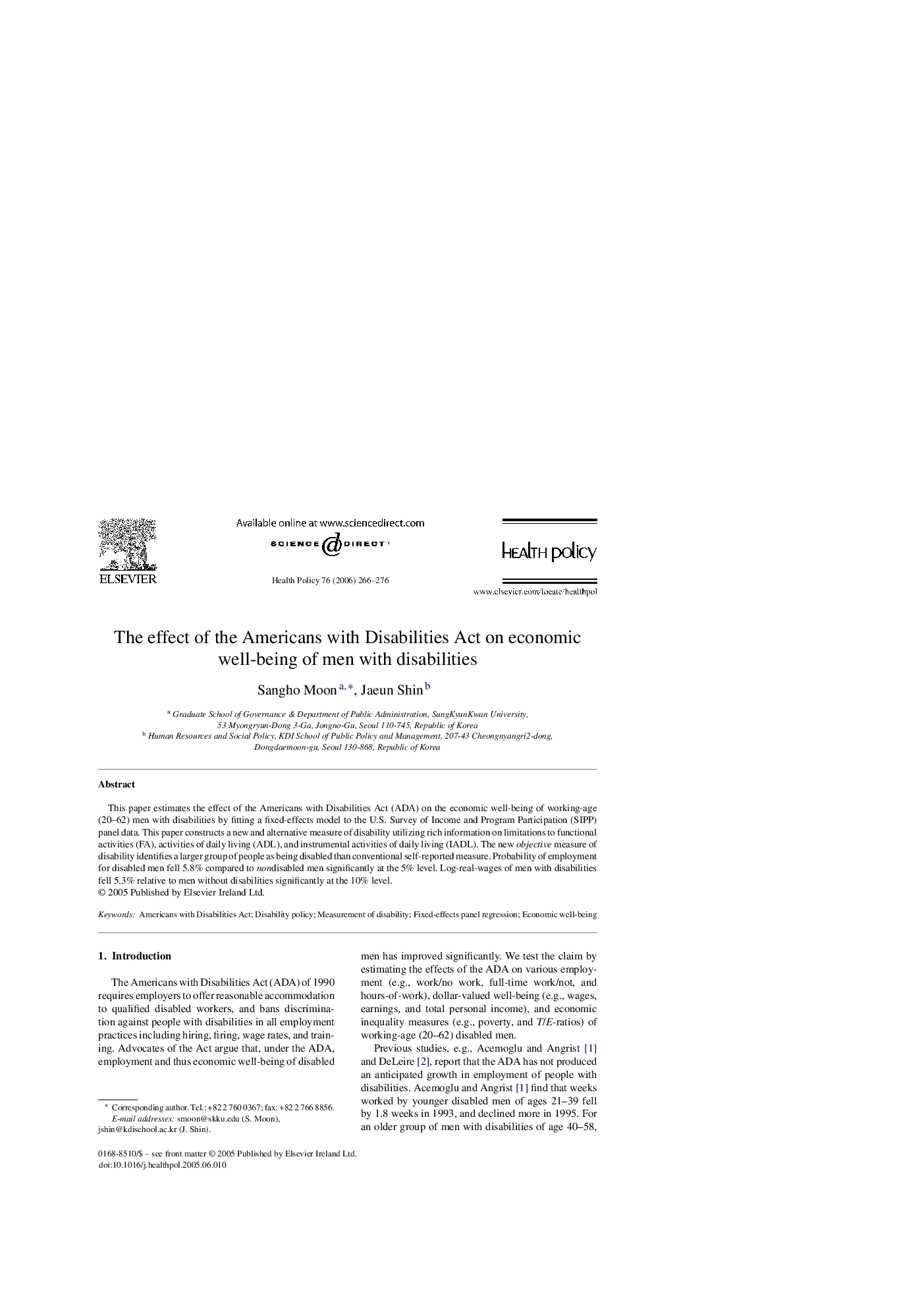| Article ID | Journal | Published Year | Pages | File Type |
|---|---|---|---|---|
| 4199258 | Health Policy | 2006 | 11 Pages |
This paper estimates the effect of the Americans with Disabilities Act (ADA) on the economic well-being of working-age (20–62) men with disabilities by fitting a fixed-effects model to the U.S. Survey of Income and Program Participation (SIPP) panel data. This paper constructs a new and alternative measure of disability utilizing rich information on limitations to functional activities (FA), activities of daily living (ADL), and instrumental activities of daily living (IADL). The new objective measure of disability identifies a larger group of people as being disabled than conventional self-reported measure. Probability of employment for disabled men fell 5.8% compared to nondisabled men significantly at the 5% level. Log-real-wages of men with disabilities fell 5.3% relative to men without disabilities significantly at the 10% level.
